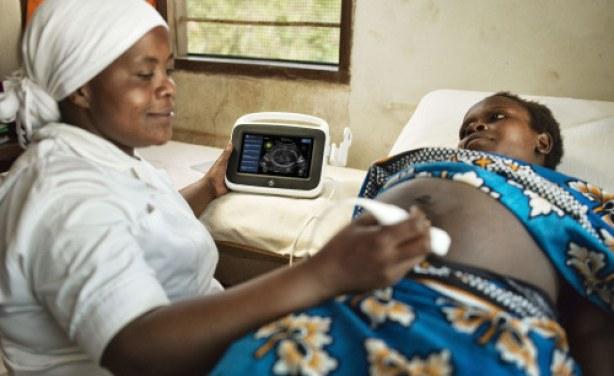More Than Philanthropy: SDGs Present an Estimated US$12 Trillion in Market Opportunities for Private Sector Through Inclusive Business
Inclusive business practices can help achieve the Sustainable Development Goals while opening up new market opportunities for companies
by Nazila Vali, Programme Analyst Private Sector, UNDP
The vast majority of the reports, papers or articles about development start with the numerous complex issues and challenges yet to be solved. Our work - as well as how it is perceived - could change drastically if, instead, we chose to focus on the incredible opportunities yet to be seized.
According to the Better Business Better World report by the Business & Sustainable Development Commission, achieving the Global Goals could open up an estimated US$12 trillion in market opportunities in four economic systems: food and agriculture, cities, energy and materials, and health and well-being. They represent around 60 percent of the real economy and are critical to delivering the United Nations Sustainable Development Goals (SDGs).
Seizing such opportunities will require revitalized and enhanced partnerships. The long and difficult process of building and nurturing partnerships with concerned stakeholders could potentially result in an outcome that is more than just the sum of its parts. Achieving the ambitious targets of the 2030 Agenda will require mobilizing all available resources and bringing together local and national authorities, civil society, the private sector, the United Nations system, and all other actors.
An increasing number of development actors, including policy makers and donor agencies, are embracing the idea of multi-stakeholder partnerships. Throughout the last few years, the concept has been growing in popularity, with an increasing recognition of the private sector role in sustainable development, as well as interest in investing in developing countries in a more sustainable and inclusive manner. According to IFC and DFID studies, any scepticism about the power of the private sector to reduce poverty has now been proven wrong with ample empirically-demonstrable evidence – it is now time to act.
The UNDP Partnership survey, conducted every two years to solicit feedback from partners on UNDP’s role and performance, also confirmed the need for increased partnerships, in particular in light of the SDGs. Helping raise awareness on and advocate for the SDGs, including through convening dialogues between government, development partners, civil society and the private sector, ranked high on the roles through which UNDP can best contribute to the implementation of the 2030 Agenda.
The objectives of multi-stakeholder partnerships with the private sector are threefold: to convene the relevant stakeholders and engage them in substantive and action oriented consultations, to develop, implement and monitor initiatives aimed at accelerating the realization of the SDGs, and finally, to improve the effectiveness and efficiency of our limited financial resources, as promoted in the SDG Goal 17 and the Addis Ababa Action Agenda of the Third Financing for Development Conference. Beyond the opportunity to harness private sector resources for development, multi-stakeholder partnerships also offer a range of potential benefits for promoting more sustainable development.
GE Healthcare, the US$18 billion healthcare technology division of General Electric, develops high-value, low-cost technologies and business innovation models to improve healthcare in emerging markets. Photo: GE Healthcare
First, multi-stakeholder partnerships offer a means to combine and leverage the financial resources of actors across sectors. This, in turn, offers opportunities to engage the private sector in development and incentives for governments and civil society to collaborate to promote economic transformation and the creation of more qualitative jobs.
Second, multi-stakeholder partnerships can help link market-driven investment projects and private sector innovation and know-how with sustainable, inclusive, and equitable outcomes. They facilitate cross-sector dialogue towards aligning diverse actors and interests around a common agenda for action, potential cross-sector synergies and collaboration, innovations and systemic change. This, in turn, can enhance the effective use of aid by reducing fragmentation and duplication – an increasing concern for donors.
Third, multi-stakeholder partnerships can promote inclusive participation in solving sustainable development challenges. By providing opportunities for local actors at the grassroots level to be involved in projects, partnerships can promote local ownership as understood by the Paris Declaration and the Busan Partnership for Effective Development Cooperation.
But partnerships are also a complex tool to implement due to their variation in roles, forms, functions, drivers, and activities. UNDP - via the Istanbul International Center for Private Sector in Development (IICPSD) – successfully developed and incubated multiple multi-stakeholder platforms such as the Business Call to Action, the SDG Philanthropy Platform or the Connecting Business Initiative. The UNDP Green Commodity Programme also supported the development of national platforms such as the Responsible Production and Trade of Pineapple in Costa Rica or the Forum Kelapa Sawit Berkelanjutan Palm Oil in Indonesia, just to name a few of the most promising UNDP initiatives that have already demonstrated substantive results. Multi-stakeholder platforms are powerful mechanisms that can systemically bring together stakeholders around issues of both business and societal importance and catalyse innovative partnership action.
Through these experiences, we realized that promoting and supporting partnerships is a complex and iterative process, requiring considerable financial and human resources. In addition, trust and transparency are the sine qua non conditions to fruitful, lasting partnerships. Partnerships with the private sector do not represent a panacea to development issues, but only an additional tool with significant potential.
As the trusted partner of a large number of governments, operating as well as an agency benefitting from an exemplary level of transparency, UNDP is uniquely placed to set up such platforms for the SDGs. To achieve these goals, the large palette of resources and capabilities of stakeholders from different sectors must be exploited and developed further and deeper. To that extent, UNDP IICPSD has developed a step by step guidance tool (currently in its pilot phase) to help countries through this process so we can achieve – together – the ambitious global goals.


